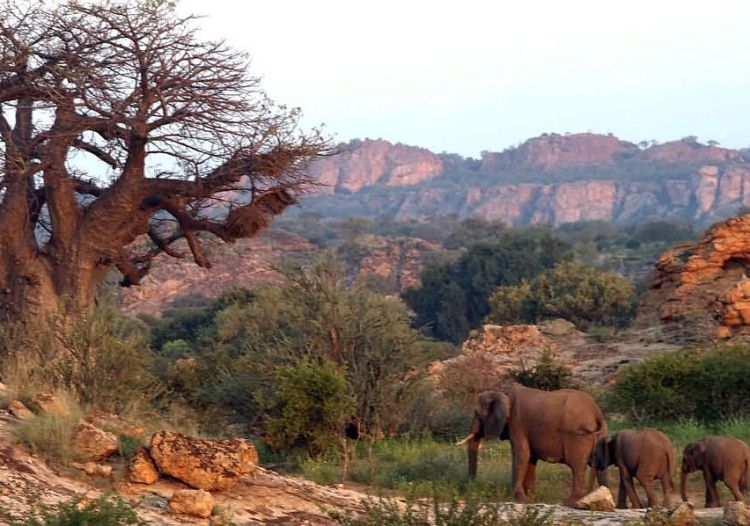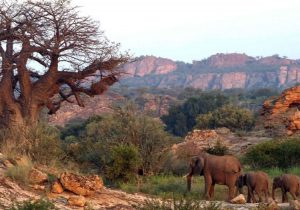The Northern Tuli Game Reserve is situated in the easternmost corner of Botswana bordering Zimbabwe and South Africa at the confluence of two great rivers, the Limpopo and the Shashe.
Tuli is scenically very different to the rest of Botswana, with dominant basalt formations and large areas of sandstone hills and ridges, together with a network of (mostly dry) riverbeds and riverine forests as well as open grasslands and marshy areas. From vantage points on top of the rock formations, the plains of Botswana stretch away to the north.
It is also known as The Land of Giants. This was the title of a book about Tuli by photographer and author couple Roger and Pat de la Harpe. These giants describe some of the things that make Tuli really special: the huge vistas and big skies; enormous baobab and Mashatu trees; the large herds of plains game; herds of elephants; a breeding ground for Africa’s heaviest flying bird, the kori bustard as well as Tuli’s great historical heritage.
The Reserve was created in 1964 and extends to 78000 hectares, shared between private landowners and local communities. The area is home to a diverse range of wildlife, renowned for its Tuli elephants – the largest elephant population on private land in Africa.
The Reserve is also fascinating from a historical perspective. Bushmen paintings provide a reminder of the area’s original inhabitants and remains of ancient settlements relating to the Mapungubwe era (circa 1200-1270 AD) are dotted throughout the area. The reserve also played a role in Rhodes’ southern African empire-building and witnessed several conflicts during the Boer War.
Visitors are accommodated at Tuli Safari Lodge which has recently been recognised as a great value scenic safari location as runner-up in The Sunday Times (UK) Travel Magazine’s Value for Money Awards 2012.






